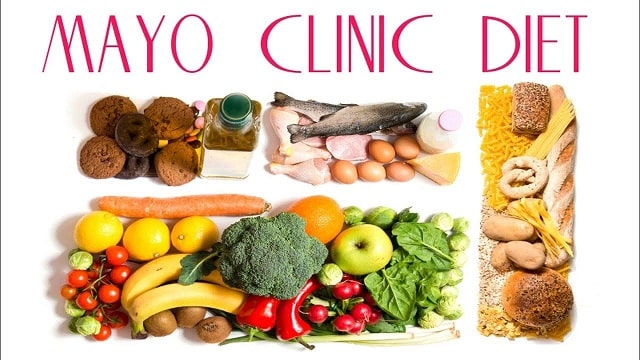Mayo Diet
The Mayo Diet is a diet method designed by the Mayo Clinic, a non-profit medical organization from the United States. Not only for losing weight, this diet also supports lifestyle changes to be healthier gradually and sustainably.
One of the main focuses of this diet is to focus on behavioral changes. Such as not eating while watching TV or increasing the amount of fruits and vegetables you eat in a day, to help you lose weight and keep it off.
The Goal of the Mayo Diet
The goal of the Mayo diet is to help you lose excess weight, and find a healthier way of eating. Not only for now but also to maintain for life.
This diet is based on the science of behavioral change, which will help you find your inner motivation to lose weight. It can also help you set achievable goals, and learn to deal with setbacks.
Benefits of the Mayo Diet
The biggest benefit of the Mayo Clinic diet is that it is about making healthy behavioral changes, rather than counting calories or macronutrients. One reason diets don’t work is that once people stop restricting certain foods and resume their pre-diet behaviors, the weight goes back up. That’s why the diet focuses on maintaining healthy behavioral changes.
How to Do the Mayo Diet
The Mayo diet is divided into two main phases, namely:
-
Phase 1: Lose It!
This phase lasts for 2 weeks. In this phase, you should focus on replacing five unhealthy habits with healthier ones and also adding five additional healthy behaviors.
If done correctly, you may lose 5 pounds or more during this phase. Again, this is about changing habits, not just focusing on calories.
Some examples of unhealthy habits that you need to stop are:
- Avoid eating added sugar.
- No snacks other than fruits and vegetables.
- Don’t eat too much meat or full-fat dairy.
- Do not drink alcohol.
- Avoid eating while watching TV.
- Don’t eat out.
On the other hand, some examples of healthy habits you can develop include:
- Eat a healthy breakfast.
- Eat 4 servings of fruits and vegetables per day.
- Eat plenty of whole grains and healthy fats, such as olive oil.
- Exercise at least 30 minutes per day, including walking.
-
Phase 2: Live It!
This second phase focuses on permanent lifestyle changes. You will need to learn about better food choices in the right portions, increasing physical activity, and how to maintain those healthy habits long-term.
In this phase, weight loss will not be drastic, but rather gradual. Whatever happened in the first phase will be carried over into the second phase. This phase is about following the habits formed in phase 1 with looser expectations.
People on this diet should normalize snacking and calorie fluctuations from day to day, and not set rigid expectations as they did in phase 1.
Mayo Diet Side Effects
The Mayo Clinic diet is generally safe for most adults. It does encourage the consumption of unlimited amounts of vegetables and fruits. For most people, eating plenty of fruits and vegetables is a good thing, as they provide essential nutrients and fiber to the body.
However, if you are not used to consuming too much fiber in your diet, you may experience some temporary digestive upset, such as bloating, as your body adjusts to this new way of eating.
In addition, the natural sugars in fruit can affect carbohydrate intake. Especially if you eat a lot of fruit. This can temporarily increase blood sugar or certain blood fats. However, this effect usually decreases as you lose weight.
If you have diabetes or other health conditions or issues, consult your doctor to tailor the Mayo diet to your condition. For example, people with diabetes may need to eat more vegetables than fruits, if possible.
Also, if you are someone who comes from a background of body image issues or eating disorders, beware. Phase 1 of this diet can trigger an unhealthy relationship with food.
Who Can Do the Mayo Diet?
Not every diet method for losing weight is effective and safe for everyone. However, basically anyone can undergo the Mayo diet because this diet method is quite safe.
For example, there are no strict calorie restrictions, food group restrictions, or strenuous exercise requirements. Plus, the diet can be tweaked to suit different individual needs with the help of a doctor.
